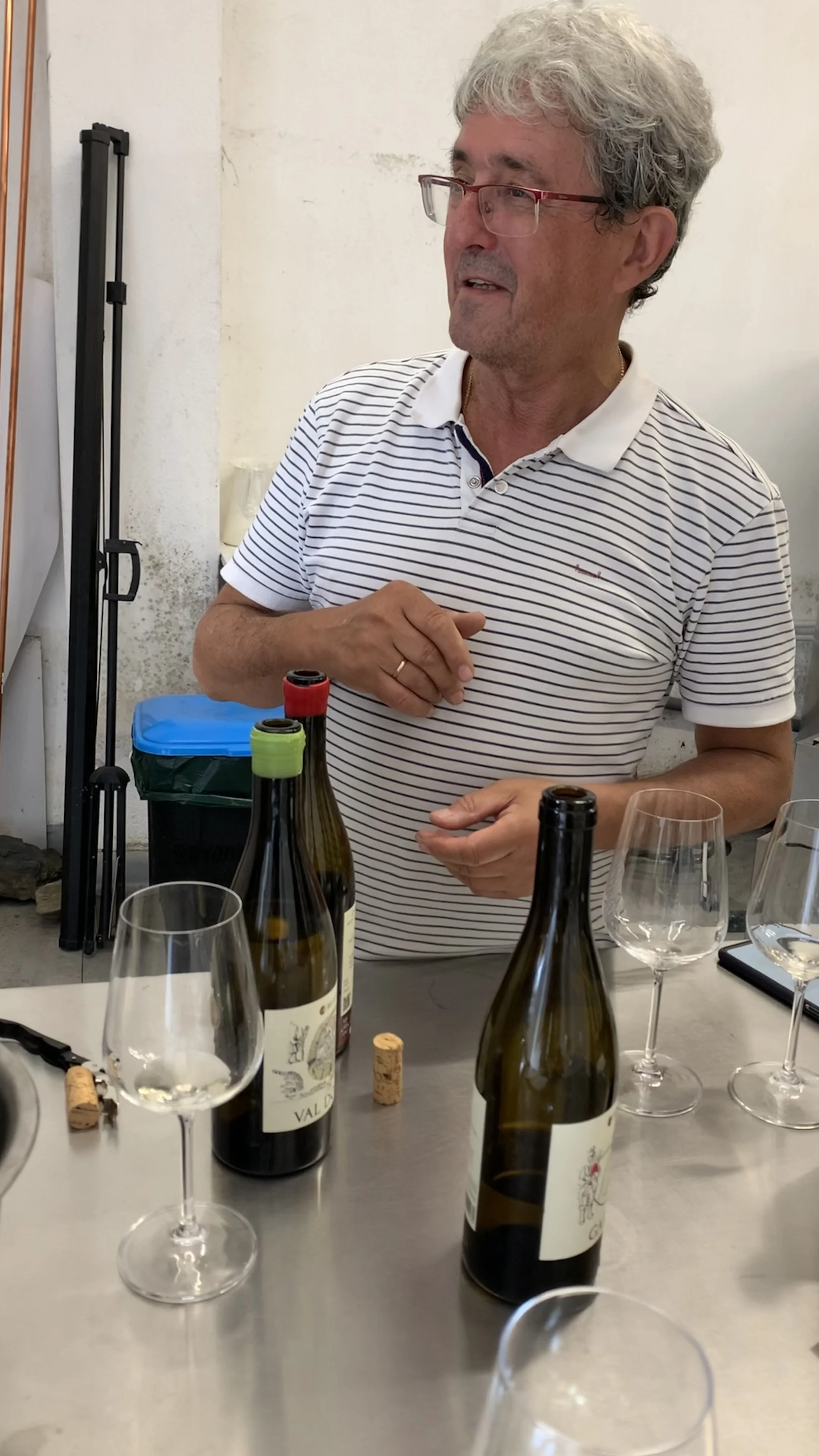
In Memoriam: Luis Sande
Betanzos is a tiny part of a tiny wine region that no one really knows about. In Spain, it’s more known for being the home of runny tortillas than for wine, and it was mostly exempt from the viticultural revival of the ‘80s and ‘90s. But that didn’t stop Luis Sande from embarking on a Quixotic quest to revive its winemaking traditions.

Yes, Virginia, There Are Red Wines in Galicia
No matter what country you’re in, we don’t drink nearly as much red wine from Galicia as we should—because most people don’t know that red wine from Galicia even exists.

Is Galicia For Sale?
Pazo de Rubianes, a historic estate and winery in Rías Baixas, is the latest in a growing list of Galician wineries no longer owned by Galicians. As outsiders move in, Galicia will have to decide what its wines really stand for.

Harvest 2025 Totals 75.8 Million Kilos, One of the Most Abundant in Galicia’s History
2025 was far from a typical year, marked by drought across Galicia, forest fires that raged through Valdeorras and parts of Ribeira Sacra in August, and the ongoing global decline in demand for red wine. It was also hugely unequal across wine regions.

Harvest 2025 in Pictures: Part 2
This time we’re in Rías Baixas, which saw a record-breaking harvest of 47.5 million kilos of grapes, which will produce roughly 32.8 million liters of wine. That makes 2025 the largest harvest in the region’s history.

Harvest 2025 in Pictures: Part 1
Harvest is officially underway in Valdeorras, one of the regions that was hit the hardest by last month’s wildfires.
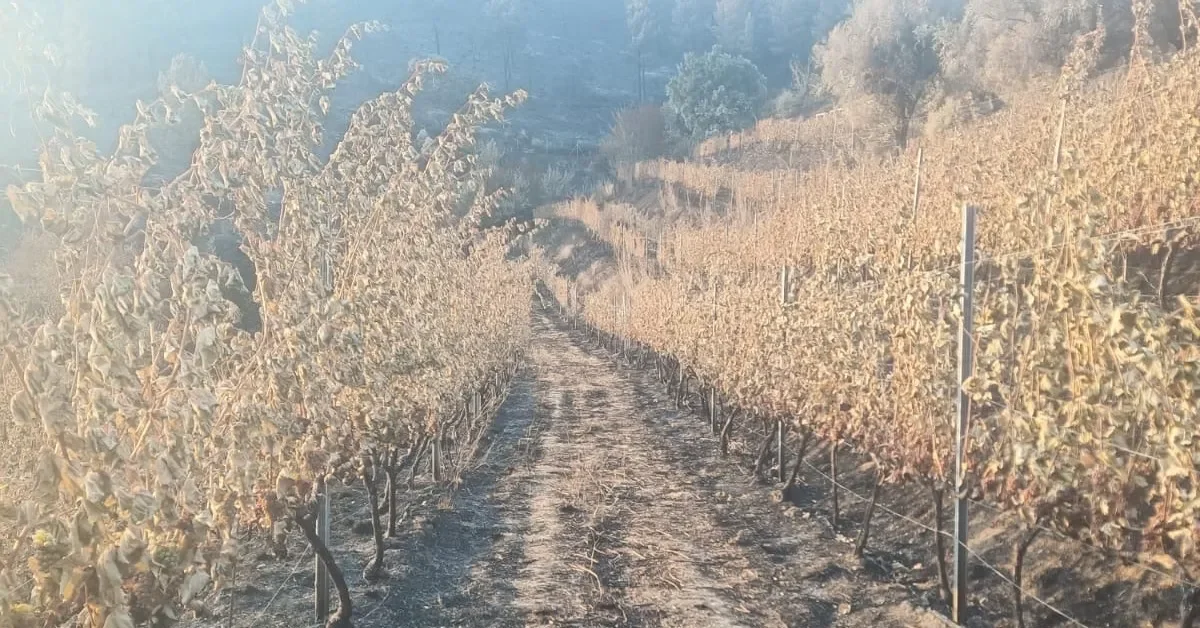
“I have a feeling we’ve lost more than one vintage”
Wildfire is a familiar threat to Paul Hobbs. The California winemaker has weathered plenty of fire seasons and even seen flames circling his vineyards. But the blaze he watched from 6,000 miles away last week is the worst fire disaster he’s ever experienced.
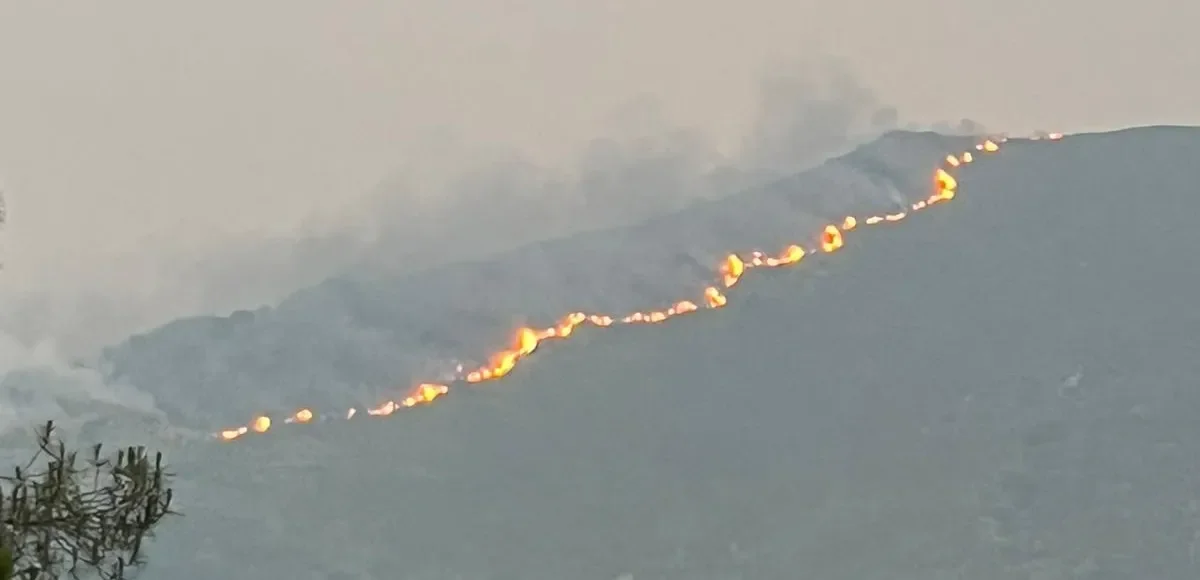
“We’re completely abandoned.”
The Seadur-Larouco wildfire burned over 30,000 hectares (74,100 acres), making it the worst wildfire in Galicia since records began. Nacho Gonzalez of La Perdida gave a raw account of losing vineyards to wildfires and government incompetence.
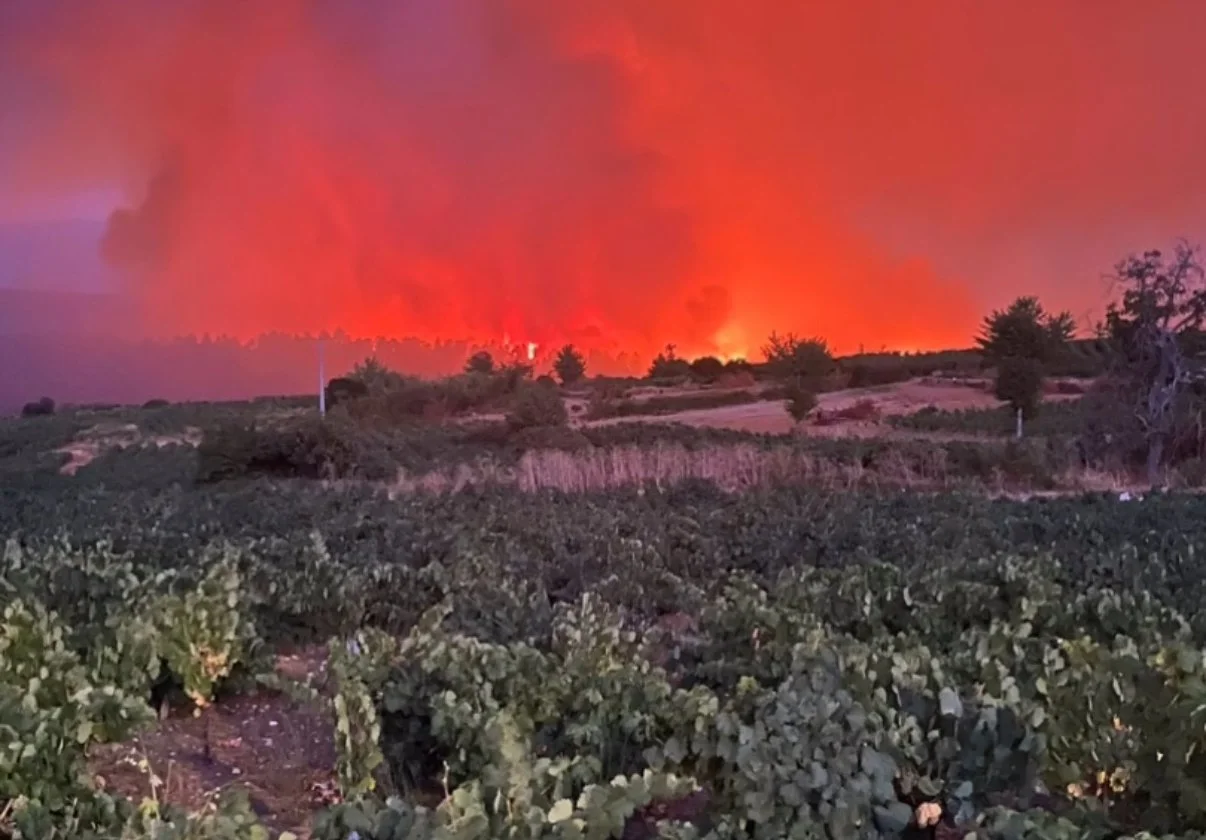
Historic Wildfires Threaten Galician Vineyards
Galicia is in the midst one of the worst waves of forest fires in decades, and the wine industry is suffering the consequences.
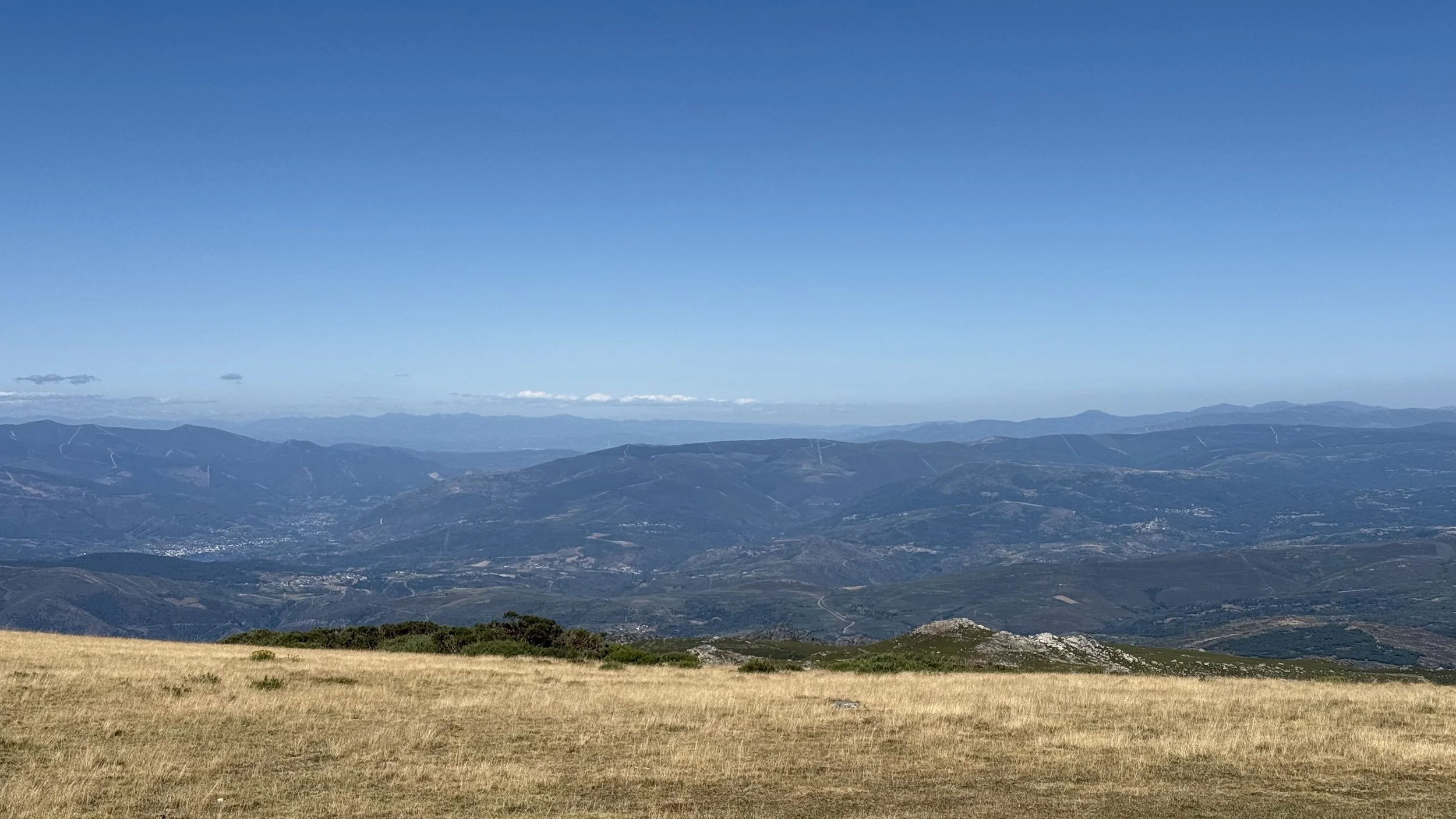
“I say: Galicia is a whole world.”
“Ti dis: Galicia é ben pequena. Eu dígoche: Galicia é un mundo. Cada Terra é coma se fora o mundo enteiro.”
“You say: Galicia is tiny. I say: Galicia is a whole world. Each part as if it was the whole world in itself.”
Vicente Risco was among the most important figures in the history of Galician literature. His quote was rattling around in my head as I drove across Galicia for a week and a half at the end of last month.

Galician Wines You Should Be Drinking: Vel’uveyra Mencía
Wines from Ribeira Sacra are fresh, elegant alternatives to reds from the Loire Valley, Burgundy, or Northern Rhône, but they somehow still fly under the radar and sell for a fraction of the price. Vel’uveyra, from Bodegas Ronsel do Sil, falls into this camp of lovely, fresh—affordable—red wines.

Champán Gallego: The Curious History of Galician Sparkling Wine
You may not have tried sparkling wine from Galicia, or even been aware it existed. Although official recognition is recent, Galicia has something of a history with sparkling wine. In fact, a hundred years ago, if you were launching a ship or ringing in the New Year, you just might have done it with ‘Champán Galicia’.

Mildew, Phylloxera, and the Return of Native Grapes: How Vine Diseases Reshaped Galicia’s Wines
How did Palomino and Garnacha Tintorera come to dominate Galician vineyards for so long? The answer lies in a chain of events set in motion nearly two centuries ago, when a wave of vine diseases caused a seismic shift in Galicia’s viticultural landscape that reverberates to this day.

Galician Wines You Should Be Drinking: Ailalá Tinto
If you’ve only had white wines from Galicia, this is your sign to dive into the reds of Ribeiro. And if your tastes lie somewhere in the neighborhood of cru Beaujolais, Loire Cabernet Franc, or Etna reds, then Ailalá Tinto will be perfect for you.

Mencía’s Missing History
Ask a grower in Bierzo, Galicia, or Portugal where mencía comes from, and each will tell you it belongs to their backyard. Mencía’s trail cris-crosses northwestern Iberia, but its presence likely predates the borders that divide Spain and Portugal. No one knows for sure where mencía came from. Its history is confusing and uncertain. And that’s exactly why it demands a closer look.

Reduction in Mencía, Explained
“Why are mencía wines so reductive?” I was recently asked this by a very smart wine professional, and I didn’t have a great answer other than “winemaking, I guess.” But that answer felt a bit reductive—see what I did there?— so I decided to dive into a bit of the science behind reduction and why it can sometimes manifest in Galician wines, specifically mencía.

Galician Wines You Should Be Drinking: Albariño de Fefiñanes
This is a classic Val do Salnés Albariño from a historic winery in Cambados, aka Albariño town, also home to the Festa de Albariño- the Albariño party!

Picking in the Pandemic
It’s September 2020, and I’m picking grapes. Outside the cities, unbothered by the global pandemic unfolding around them, vines budded and flowered, grapes kept growing, and now, in September, they need to be picked.

Confronting the T-Word
The U.S. is the biggest export market for Galician wines, absorbing about 30% of Galicia’s wine exports each year. Rías Baixas alone is responsible for over €20 million in exports. So it’s logical that they might be a bit worried. Or not?

The Last Queimada at O Cachivache
It’s been five years since the Covid-19 pandemic upended our lives and sent the world spiraling. I was in Spain at the time, riding out a lockdown far from my family and most of my friends. A month earlier, in February 2020, my favorite bar in A Coruña closed, preceding what—though we didn’t know at the time—would be a wave of countless other closures. Luckily, we had the chance to give it a proper send-off. Later, living in Rioja and riding trains back and forth from the school where I taught English, I had a lot of time to reflect. I wrote this tribute to Cachivache then, and five years on from that crazy time it feels like a good time to send it out into the world.
